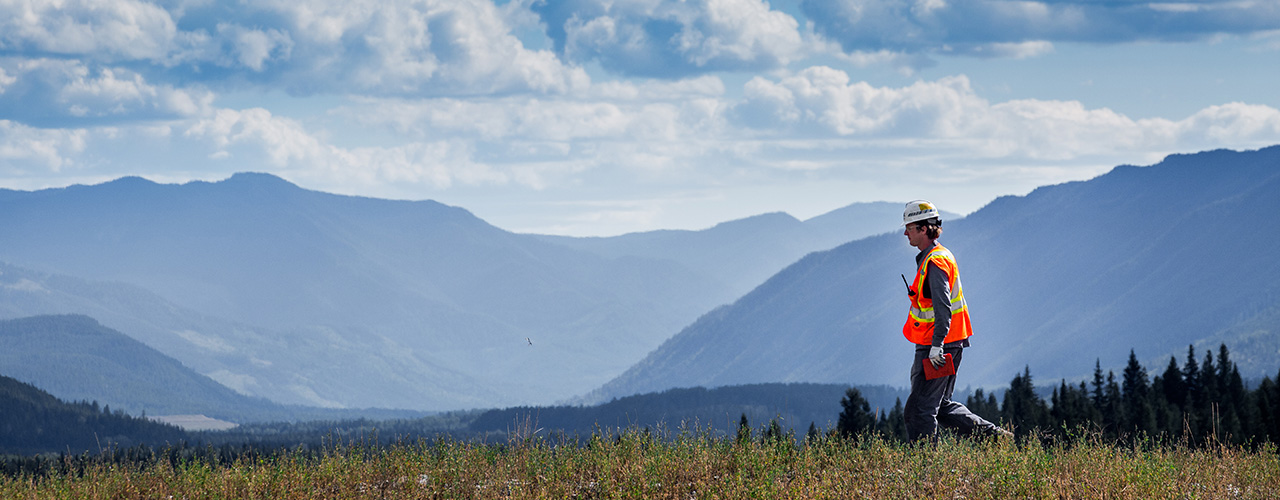Tailings are a common by-product of the mining process. They are created as mined ore is crushed, ground or washed to separate the valuable minerals and metals for further processing. The waste from this process is called tailings. Tailings are commonly in the form of a slurry of fine mineral particles water but can also include coarser materials. Management of tailings most often involves storage in a specially-designed impoundment called a tailings facility.
These facilities can be among some of the world’s largest engineered structures and can result in potentially catastrophic consequences to surrounding areas should the facilities fail.1 Tailings facility failures are relatively rare, but when they do fail they pose health and safety, environmental and community risks. Two catastrophic tailings facility failures in Brazil - Mariana in 2015 and Brumadinho 2019 - emphasized that while tailings management has come a long way, there are still improvements that the mining industry can make.
 Dr. Michael Davies, Senior Advisor, Tailings & Mine Waste Management
Dr. Michael Davies, Senior Advisor, Tailings & Mine Waste Management
Coming together around tailings
Following the tragic Brumadinho tailings incident, the International Council on Mining and Metals (ICMM) partnered with the UN Environment Programme and the Principles for Responsible Investment, under the guidance of Dr. Bruno Oberle as group Chair, to convene independent tailings experts from around the world to improve global management of tailings facilities. The result of this effort was finalized in late 2020 when the Global Industry Standard for Tailings Management (GISTM) was published.
In addition to the expert panelists who authored the document, there were a number of advisors from around the world appointed to the development of the GISTM. Teck’s Dr. Michael Davies was an industry expert serving as an advisor and contributing to the development of the GISTM. We interviewed him to get his perspective on the Standard and its importance for the industry.
What made the GISTM different as compared to existing management requirements?
Existing practices approach the various aspects of tailings management separately. Community experts, engineering experts, and executive management with high-level oversight. This all largely makes sense and is the traditional way of approaching any big project. However, it’s become clear that there are some deficiencies in this approach when applied to tailings management. No matter how well we do each of these things individually, there are areas where each practice overlaps where nuance may be lost and gaps, versus redundancy, can result.
That’s where GISTM is different. This new Standard requires that each of these groups work closely together with a shared goal of zero catastrophic outcomes.
For someone who has been working with tailings more than 35 years, it’s been really incredible to witness. I’m seeing more and more people across the industry look outside their area of expertise to see these interactions between practice areas. For example, I’ve heard a geotechnical practitioner speaking about community engagement and where and how it should be considered in their own work. That’s the revolutionary part of GISTM – it creates this structure to ensure there aren’t any gaps in tailings governance between already strong areas of practice.
How is Teck approaching implementation of GISTM?
Teck is already well-developed in the area of tailings management, having centralized our expertise within our corporate Tailings Working Group and fully engaging senior management in those activities. At the level of the Working Group we have interactions across all areas of sustainability among site and corporate practitioners; tailings is also folded into our cross-cutting corporate sustainability strategy. The GISTM has crystallized the expectations of cross-functional best practices across the industry, and further reinforced the concept for Teck. We have also been Mining Association of Canada (MAC) members for more than twenty years and embodied their industry leading tailings management guidance well before the GISTM was published.
Using the MAC Guidance, at Teck we already had of engineers of record, conducted independent reviews and had assigned corporate responsibility to the very top of the company. These are industry-leading practices and core elements within the GISTM that others in the industry are now more universally adopting. The enhanced GISTM also focuses on local communities through transparency and engagement. We’re always looking to improve how we operate, and I believe the commitment we have made to GISTM conformance will support even greater consistency across our company. The focus in the GISTM on a life-cycle approach - where we plan, build and operate with secure closure in mind - is aligned with Teck’s values and the expectations of our communities.
What sort of impact do you hope that the GISTM has on the industry as it comes into force?
There’s a quote that I really like from Potter Stewart: “Ethics is knowing the difference between what you have the right to do and what is right to do.” I think the GISTM will have an impact on the mining industry to set that “what is right to do” expectation. The GISTM sets a voluntary standard that raises the bar and sets a benchmark for best practice that includes effectively communicating those efforts. It’s what we will all be striving to achieve as an industry, moving from good to great.
I’m enthusiastic about the Standard coming into effect. At Teck we have already met about 75% of the Standard’s requirements across our sites and we will have it fully implemented and met by August 2023 for across our active sites, as well as having it embedded in our development projects. We’re always looking to do better. Part of that in this case is having a third-party assessor check our work and confirm that we’re in alignment with GISTM and I look forward to having that third-party perspective on our work and processes.
Learn more about our approach to Tailings Management in the Tailings section of our website.


